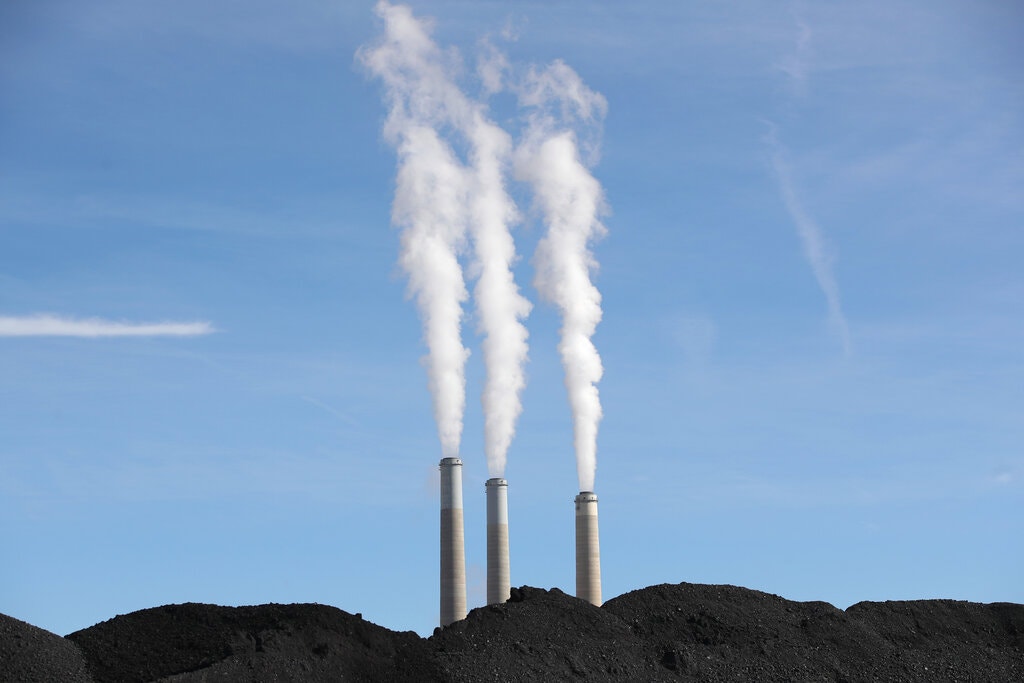

The Trump administration on Monday relaxed strict Obama-era standards for how coal-fired power plants dispose of wastewater laced with dangerous pollutants like lead, selenium and arsenic, a move environmental groups said would leave rivers and streams vulnerable to toxic contamination.
The Environmental Protection Agency regulation scaled back the types of wastewater treatment technologies that utilities must install to protect rivers and other waterways. It also pushed back compliance dates and exempted some power plants from taking any action at all.
The change is one of several the Trump administration has pushed to try to rescue a coal industry in steep decline, extending the life of aging coal-fired power plants and trying to make them more competitive with cheaper natural gas and renewable energy. The move came days after President Trump’s son Eric described his father as a champion of coal miners who “will fight for you.”
Coal industry executives, who had criticized the original restrictions as costly and overly burdensome, praised the changes. Andrew Wheeler, the E.P.A. administrator and a former coal industry lobbyist, described the revisions as “more affordable pollution control technologies” that would “reduce pollution and save jobs at the same time.”
E.P.A. officials hailed the move as a milestone in Mr. Trump’s policy of achieving “energy dominance.” Environmental activists said the new rule threatened the health of the 1.1 million Americans who live within three miles of a coal plant discharging pollutants into a public waterway.
“There are dozens of water bodies around the country where the local water is significantly impacted by this type of direct dumping of toxic metals from power plants,” said Thomas Cmar, an attorney with the environmental group Earthjustice.
He said the new rule would help keep older, dirtier coal plants alive longer by allowing companies to use “cheap and ineffective methods of dumping pollution into our waterways.”
Coal plants often use scrubbers to remove mercury, sulfur dioxide and other substances from smokestacks, which are then poured into nearby rivers and streams. In 2015 the Obama administration, revising standards that had not been touched since the 1980s, required industry to set deadlines for power plants to invest in state-of-the-art wastewater treatment technology to keep toxic pollution out of waterways.
The 2015 regulation also required them to monitor local water quality and make more information about the results publicly available. The Obama administration estimated the regulations would stop about 1.4 billion pounds of toxic metals and other pollutants from pouring into rivers and streams and cost industry $480 million a year. The E.P.A. at the time said the public would save about that same amount of money through benefits like lowered health care costs.
On Monday, the E.P.A. estimated that the new rule would save the electric power industry about $140 million annually and eliminate 1 million additional pounds of toxic pollution each year over and above the original regulation by improving efficiency and through a voluntary incentive program.
The revised rule gives companies more time to comply with the installation of new technologies and allows any coal plant scheduled to retire or stop burning coal by 2028 to avoid the requirements altogether.
Michelle Bloodworth, president and chief executive of the American Coalition for Clean Coal Electricity, an industry group, said in a statement that the Obama-era restrictions “could have forced the closure of additional coal-fueled power plants that are necessary to maintain the reliability and resilience of the nation’s electricity supply.”
Dulce Ortiz, co-chairwoman of Clean Power Lake County, an environmental organization in Waukegan, Ill., who lives about a mile and a half from an NRG coal-fired power plant on the shore of Lake Michigan, said her family members and neighbors already suffered asthma and other respiratory issues they believe are linked to local pollution.
“My community has a painful history of industrial pollution and contamination,” Ms. Ortiz said. The revised rule, she added, “will have a huge impact on our health.”
Guest post from The New York Times




